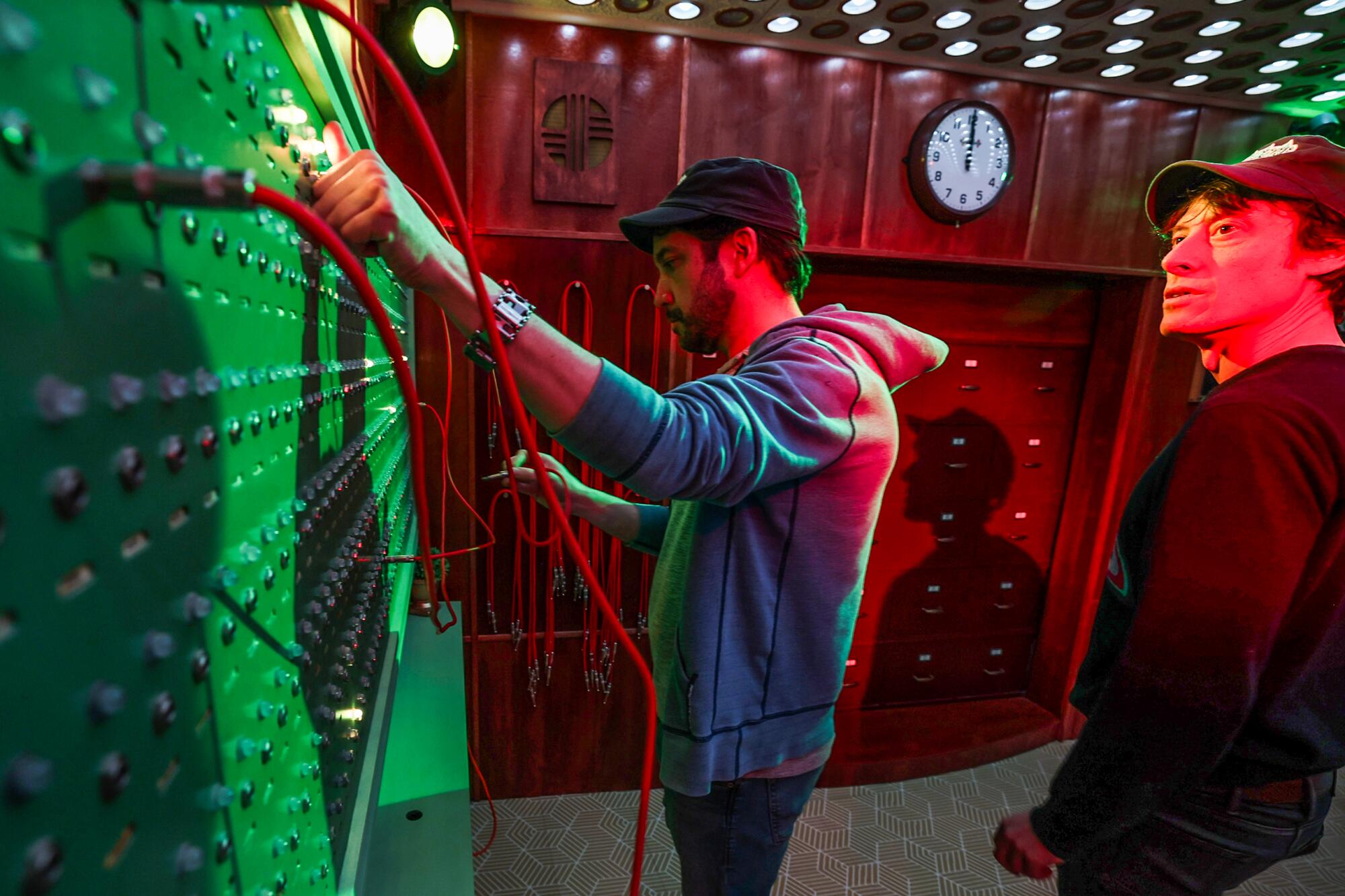Explore Why Escape Rooms Are Fun and Offer a Special Way to Bond With Buddies and Household
Retreat areas have emerged as a captivating form of enjoyment, supplying a blend of immersive storytelling and mental stimulation that is both fulfilling and difficult. What precisely establishes getaway rooms apart as a bonding experience?

Immersive Storytelling
While the principle of escape areas may at first appear simple, it is the immersive narration that truly sets them apart. These experiences are carefully made to transfer individuals right into one more globe, weaving engaging narratives that involve and mesmerize. From the minute players step right into the area, they are enveloped in a very carefully crafted ambience, complete with complex details, audio results, and thematic aspects that serve to boost the storyline.
Each escape room features a special story, frequently involving a mission or secret that individuals have to solve within a set timeframe. The storyline is not simply a background yet is important to the experience, affecting the layout of puzzles and the layout of the room. This narrative-driven method guarantees that every aspect, from the hints to the decoration, adds to the unfolding story, producing an immersive and cohesive atmosphere.
Furthermore, the use of sophisticated innovation and interactive functions even more strengthens the immersive experience. Digital interfaces, boosted fact, and sensory impacts can make the story come alive, allowing individuals to feel as though they are really component of the unfolding dramatization. This immersion fosters a feeling of exhilaration and necessity, elevating the overall satisfaction of retreat rooms.
Mental Excitement
Engaging in escape spaces uses participants an unique form of psychological stimulation that tests cognitive abilities in stimulating and varied ways. These immersive experiences need individuals to address detailed problems, understand codes, and believe critically under time restrictions. This environment fosters enhanced analytical skills, as individuals need to browse a series of intricate difficulties that require sensible thinking and innovative reasoning.
Retreat areas usually integrate a range of challenge types, from mathematical formulas to etymological riddles and spatial recognition tasks. This variety ensures that various cognitive functions are involved, offering a thorough mental workout. As an example, addressing a cipher might develop analytical skills, while a physical puzzle might improve hand-eye coordination and spatial reasoning. The need to change between different types of thinking keeps the mind agile and engaged.
Furthermore, the time-sensitive nature of getaway areas includes an element of pressure that boosts cognitive efficiency. Individuals are urged to believe swiftly and efficiently, improving their ability to procedure details and make choices quickly. This elevated state of mental task can lead to boosted focus and sharper cognitive capabilities, making getaway areas not only an enjoyable diversion however also an important exercise for the brain.
Team Effort and Teamwork
Memorable Experiences
Usually, one of one of the most compelling facets of escape spaces is the production of unforgettable experiences that stick around long after the game has actually ended. The immersive nature of getaway areas, with their detailed challenges and involving storylines, gives participants with a sense of success and camaraderie that is difficult to reproduce in other social activities. These experiences end up being valued memories, frequently stated with excitement and nostalgia.
The joint initiative required to resolve the obstacles fosters a distinct sense of unity amongst individuals. Pals and family members are provided the chance to work with each other in a high-pressure, yet enjoyable atmosphere, enhancing bonds and boosting interaction abilities (orlando escape room). The shared success and even the occasional failures add to a cumulative feeling of accomplishment and pleasure
In addition, the thematic variety of retreat rooms ensures that each experience stands out. Whether navigating a haunted manor or decoding hints in a spy-themed setting, the variety keeps the excitement fresh and the memories vibrant. This variety not only accommodates various passions yet additionally makes sure that each see to a retreat space is a special experience.
In essence, retreat rooms supply extraordinary experiences that build long-term connections and give stories to be valued for years ahead.
Final Thought
Retreat rooms supply a distinctive method for see this page bonding via their immersive storytelling, mental excitement, and reliance on teamwork and cooperation. These components collectively create an exhilarating environment that tests individuals, fostering cognitive development and strengthening relationships. The adventure of getting rid of intricate issues together causes unforgettable experiences and an extensive sense of achievement. Getaway areas emerge as a pleasurable and unique task, combining enjoyment with the development of necessary social and cognitive skills.

Structure on the foundation of synergy and collaboration, the adventure of the challenge in getaway orlando escape room spaces supplies participants an electrifying experience that evaluates their analytic abilities and psychological acuity - escape room in orlando.Furthermore, the meticulously crafted complexity of getaway areas makes sure that no 2 experiences are alike.Typically, one of the most engaging aspects of getaway spaces is the production of memorable experiences that remain long after the video game has actually concluded.Additionally, the thematic variety of retreat rooms guarantees that each experience is distinct